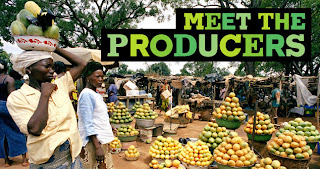Zulu beadwork Karen long-neck girl Indian wedding jewellery
Whilst some jewellery retains its importance within certain cultures, it is becoming increasingly obvious that other societies are retaining their culture in order to attract tourist money rather than as a natural continuation of their beliefs.
Whilst this may be the case, there are numerous jewellers who work with communities and tribes with the aim of reviving and maintaining their traditions and skills. Pippa Small is one such jeweller who was initially trained as an anthropologist. She has worked with numerous big names including Nicole Farhi and Gucci to produce ranges of her distinctive signature rough cut gems and yellow gold.
On a more ethical note, Pippa Small has teamed up with social groups which are renowned for their traditional jewellery making skills with the intention of establishing trade which will benefit them and spark an interest in their repressed traditions.
In recent years Pippa Small has worked with Turquoise Mountain , a scheme based in Afghanistan with the aim of regenerating traditional artisanal skills to supply jobs and to improve the lifestyle of those who have been affected by Afghanistan Afghanistan
When the Taliban came to power in 1996 the Afghan way of living was changed with certain traditions, including jewellery, purged from society. When the Taliban left in 2001 the country had been decimated by war and restarting the jewellery trade trailed far behind repairing and rebuilding infrastructure.
Pippa Small worked with traditional jewellery artists, through Turquoise Mountain , using locally sourced materials and traditional techniques in order to bring a range of jewellery to the West and bring awareness of the issues being faced and the amazing craftsmen that reside in Afghanistan
Pippa Small & Turquoise Mountain Lapis Lazuli earrings
And this model is being followed by other jewellers and designers in other countries with other artisan craftspeople. Leblas’ designer Arabel Lebrusan is Spanish born and retains her roots by working with filigree artisans in Spain
Fair Trade organisations like Made work with small, disadvantaged communities in East Africa with the intention of producing numerous ranges of craft-based jewellery which is then sold through multiple retailers such as ASOS and John Lewis. Amongst many other designers, Pippa Small has also designed a collection for Made.
There is, however, a flip-side to the current trend for cultural jewellery. Over the summer, Opulent Ethics were lucky enough to visit Thailand and meet with some of the Karen Long-Neck hill tribes who migrated from Burma into Northern Thailand due to political unrest. The women of the tribes are best known for wearing metal rings around their necks. We learnt that girls as young as 7 years of age are forced to wear the rings which are worn permanently. The rings were originally intended to protect the women from tiger attacks as they lived in jungles where this was common.
Karen long-neck elder
In modern times though, we all know that wild tigers are rarer than ever before and as areas become more developed the likelihood of tiger attacks has diminished. Also, with increased access to medical treatment it must be well known that the rings may be causing damage to the girls and women who have to wear them. Whilst Opulent Ethics was with the Karen tribes people we enquired as to why they are still worn and sadly, we were told that the tourist money brought in makes it worthwhile.
The people who form the rings and other jewellery worn by these tribes’ people are obviously talented silversmiths so can their talents not be put to other use nowadays? Could the right marketing and/or collaborations be just the ticket needed to ensure that the cult does get put back into cultural jewellery without damaging those societies it comes from?
That’s all for now….























